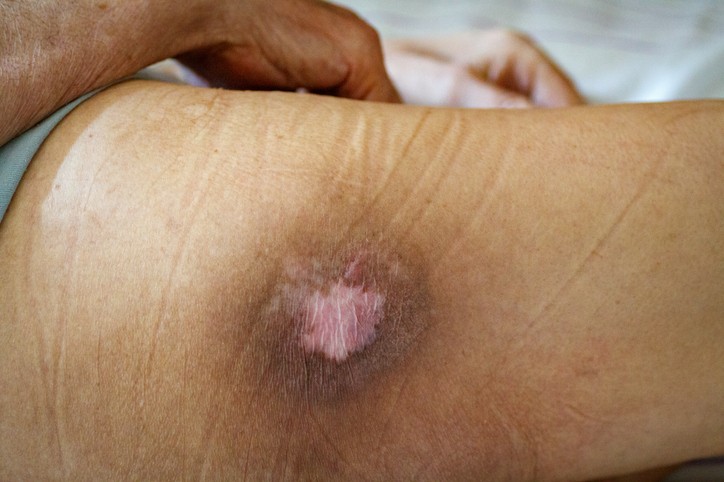
Healing power: 6 top tips for managing a pressure sore
Following a life-changing injury, or if you’ve become bed- or wheelchair-bound due to age or disease, you could be at risk of developing a pressure sore.
Pressure sores can have a huge impact on a person’s wellbeing and create long-term complications if not treated quickly and appropriately in the first instance.
Managing a pressure sore requires careful attention and appropriate measures to promote healing and prevent further damage. In this blog post, we'll provide tips on managing pressure sores to help you minimise discomfort and promote faster healing.
What do pressure sores look like?
Pressure sores can range from mild redness or discoloration to severe wounds that penetrate through the skin and into the underlying tissue, muscle, and bone. They can appear as raised or flat patches of discoloured skin, blisters, or open wounds.
How do pressure sores develop?
A pressure sore is a localised injury caused by direct pressure on an area where blood supply has been restricted over a long period of time.
Common sites for pressure sores include:
- Heels & ankles
- Bottom
- Lower back
- Hips
- Sacrum & coccyx
- Elbows and scalp
Pressure sores are graded 1-4 depending on the severity of the sore, the most severe are grade 4.
- Non Blanchable Erythema (Redness of intact skin)
- Partial thickness (Presents as an abrasion or blister)
- Full thickness (Skin loss/damage to the subcutaneous tissue)
- Extensive destruction (Damage to the muscle, bone and supporting structure)
How do you prevent pressure sores?
- Keep moving! Lift, lean, move & elevate to allow blood flow to circulate to all areas of the body that has limited mobility.
- Check your skin! Blanch daily to ensure you are keeping an eye on your blood circulation. Press down on your skin until it turns white, then release. The area should return to red, indicating good blood flow.
- Keep the skin dry! Fully clean, dry and moisturise to avoid unnecessary skin breakages. Using a good barrier cream can also help to keep moisture from ‘accidents’ setting into the skin and causing further damage.
- Eat a well-balanced diet! Nutrition is a significant factor when aiding skin conditions, maintaining overall health and plays a critical role when healing pressure sores. *Protein is vital for repairing tissue, so increase your intake of lean poultry, milk, eggs, and lentils! Also add good fats into your diet such as avocado, oily fish & extra virgin olive oil which contains high levels of Omega-3. Omega-3 reduces inflammation within the body, builds skin cells, and maintains overall skin integrity.
- Eat a rainbow! Consuming at least 5 fruits or veggies daily will help maintain healthy skin as they’re full of vitamins, minerals and antioxidants such as Iron, Vitamin A, Vitamin C and Zinc which is beneficial for improving blood circulation, repairing & healing tissue within the body, and prevents infections.
- Avoid Sugar! Foods with high sugar content thrive within the gut and will ‘feed’ the bad bacteria which rapidly multiplies, leaving you feeling lethargic, sluggish and will make any underlying infections worse.
Healing power for pressure sores
In summary, pressure sores can have a significant impact on a person's quality of life and can lead to long-term complications if left untreated. However, with proper care and attention, pressure sores can be effectively managed, and healing can be promoted. The tips provided in this blog post, including regular movement, skin checks, moisture control, and a well-balanced diet, can help minimise discomfort and prevent further damage. By taking these preventative measures, you can reduce the risk of pressure sores, maintain healthy skin, and improve your overall health and wellbeing.
Getting further support
You can find out more about pressure sores on the government’s Stop The Pressure website.
And if you have any questions about caring for relatives or friends, contact us, we’d love to help.